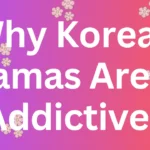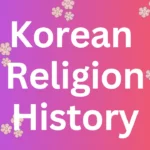Korean lovers, are you Korean history lovers looking for Korean dance history? You are in the right spot. Let’s look at the history of Korean dance. Originating in prehistoric shamanic ceremonies, traditional Korean dancing rose at prominence in the 2nd millennium AD under the Goryeo and Joseon dynasties. The Hermit dance, Ghost dance, Buchan Chum “fan dance,” Seung Mu “monk dance,” and Oudong “entertainer dance” are among the dances that, despite their modest beginnings, have achieved enduring fame. During Korea’s annexation by Imperial Japan, some dances, such as Jeju obbang gaksichum, were suppressed culturally.
However, innovative Korean dancers like Choi Seung-hee preserved many traditions in secret and overseas by inventing new Korean dances based on old dances. With several colleges teaching it and some even offering instruction overseas, Korean traditional dance is currently experiencing a thriving rebirth. Renowned dancers are regarded as “Living National Treasures” and must teach their students their dances. Dance and dancers have a long history dating back countless generations.
History of Korean Traditional Dance
Shamanistic rituals in Korea date back about 5,000 years, when dancing was first used in dance. Shamanism integrates the customs and beliefs of Korea’s indigenous people; in the early days, each community had its dancing style and set of religious beliefs. Typically, every area had its indigenous deities, and Shamans assisted in guiding the dead into paradise during burial ceremonies. The choreography of the dances, like the southern Tang’ol, was intended to amuse a deity or goddess.
Korean dancing was widely encouraged and held in great respect by the Korean royal family, the royal court, and educational institutions when the later Korean kingdoms emerged. Usually, there was even an official dancing section under the government. More than a millennium ago, several dances rose to prominence. Among them were:
- Ghost dance
- Fan dance
- Monk dance
- Entertainer dance
Numerous dances, including the fan dance, sprang from the first shaman dances. Farmers and folk dance organisations still practice other traditional Korean dances nowadays. Korean dancing is frequently accentuated with props, which range from hats to swords, which are displayed on stage.
Storytelling Movement
Most of the Korean dances that are regarded as traditional include a narrative that depicts Korean culture. In the Ghost Dance, for instance, the dancer meets up with their deceased spouse again and goes through a second farewell filled with sadness and sorrow. The Great Drum Dance, on the other hand, uses a gigantic drum that is frequently larger than the performer. The sound of the drum tempts a pure religious person, like a Korean monk, who ultimately succumbs to its allure.
During Japan’s 1910–1945 occupation of Korea, many of these well-known dances were ignored and forced from society. Local dance traditions waned and the majority of dance academies closed. A little group of dancers recreated the ancient choreography using what they recalled after Korea was freed from Japanese rule. These dances were initially kept alive covertly until finally finding a new home in contemporary Korean society. The storytelling element persisted, and elite Korean dancers are now required to instruct younger pupils in the traditional dances.
Among the storytelling dances still performed today are:
- Fluttering butterfly wings dance
- Phoenix Dance
- Dance of the Spring Nightingale
- Dance depicting beautiful women picking peonies
- Sword dance
- The fragrance of dancing mountain
- Drum dance
- Lion dance
- Boating party dance
- Ball game dance
- Dance to wish great peace
- Victory dance
- Maidens’ circle dance
- Farmers’ dance
- Dance of the eight unworthy monks
- Old woman’s dance
New Traditions
Koreans love popular dance genres in addition to their traditional dances, which have been revived and conserved. This is particularly the case with modern dance, which has been extremely popular in Korea. Modern dance was founded by renowned South Korean choreographer Sin Cha Hong, and it is frequently studied by today’s dance students in addition to ballet and folk dancing. Acknowledged as the country’s top dance performer, she established a dance group in New York City and then went back to her native South Korea to mentor upcoming dancers.
Korean dancers of today receive instruction in traditional dance from their elder friends and relatives as well as from local studios.
Schoolchildren often learn “passed down” dances in advance of holidays and festivals, while more formal dance styles, such as ballet and modern dance, are only studied in private.
The ancient dances are still widely recognized and revered, and they play a significant role in Asian dance history and culture, even though numerous new dance styles have emerged and flourished in Korea.
Types of Korean Dance
Korean dance is a vivid and captivating art form that embodies Korea’s rich cultural legacy. Korean dance, with its exquisite dances, expressive movements, and colourful costumes, demonstrates the diversity and beauty of the country’s traditions. This piece takes the reader on a tour of the fascinating forms of Korean dance, examining its distinctive qualities, cultural relevance, and historical connection.
Korean Fan Dance
Buchaechum, often known as the fan dance, is among the most well-known and aesthetically pleasing forms of Korean dance. Dancers wearing intricate hanbok carefully manage large fans to create captivating patterns. The graceful movements, skillful footwork, and vibrant costumes highlight the grace, beauty, and elegance of Korean culture. The Buchaechum is often performed for audiences enthralled by its magical allure on festive occasions, holidays, and cultural events.
Salpuri
The complex and highly expressive Korean shamanic rites that gave origin to Salpuri. This solo dance is meant to cleanse the soul and restore equilibrium inside. This is symbolized by the expressive and flowing movements of the dancers, which stand for the outpouring of intense emotions and the depletion of spiritual vitality. Salpuri is a contemplative dance that, when performed in traditional music, links the artist and the audience to the spiritual realm.
Ganggangsullae
Ladies perform the Ganggangsullae, a traditional circle dance, at harvest festivals and other festivities. Originating in shamanic rituals, this vibrant, rhythmic dance symbolizes the camaraderie and solidarity of the Korean people. The dancers form a circle, holding hands and dancing in sync while they chant and perform traditional songs. Ganggangullae not only depicts Korea’s deeply rooted traditional customs but also the joy, companionship, and gratitude that come with bountiful harvests.
Monk’s Dance
The Monk’s Dance, or Sengmu, is a unique kind of Korean dance that incorporates Buddhist themes. This solo dance is performed by male dancers wearing flowing robes and gat, or high caps. Seungmu communicates Buddhist teachings and a feeling of spiritual enlightenment through a blend of flowing movements, symbolic footwork, and elegant hand gestures. The dance, a profound act of devotion and introspection, portrays the inner journey of a monk seeking enlightenment.
Farmer’s Dance
Nongak. Known by most as the “Farmer’s Dance,” this lively and energetic dance is done at agricultural festivities in rural towns around Korea. Performers execute dynamic moves, leaps, and acrobatics to the tunes of traditional instruments including flutes, drums, and melodies. Nongak is a celebration of the tenacity and prosperity of agricultural communities and stands for the vitality, happiness, and sense of belonging that come with living in the country. Dancers and spectators alike are enthralled by the infectious energy produced by the lively and energetic dance.
Mask Dance
The traditional Korean dance form known as “talchum,” or mask dance, combines story, humor, and vibrant costumes. Performers use masks that depict a variety of personas, such as noblemen, monks, and commoners. Through exaggerated gestures, humorous conversations, and caustic remarks, Talcum effectively conveys historical events, folktales, and modern concerns. This lively and entertaining dance form showcases the creativity, humor, and narrative prowess of Korean culture.
K-Pop Dance
K-pop dancing is a vibrant and integral part of popular culture in Korea. K-pop dancing has become popular all over the world because of its catchy tunes, intricate choreography, and visually breathtaking performances. It is practiced and celebrated by both professional dancers and amateurs who study and mimic the signature dances of K-pop celebrities. K-pop dance studios and schools are popular in Korea because they provide aspiring dancers with training and opportunities to showcase their abilities. Along with the music business, K-pop dance affects many other facets of Korean society, such as fashion, entertainment, and even travel.


